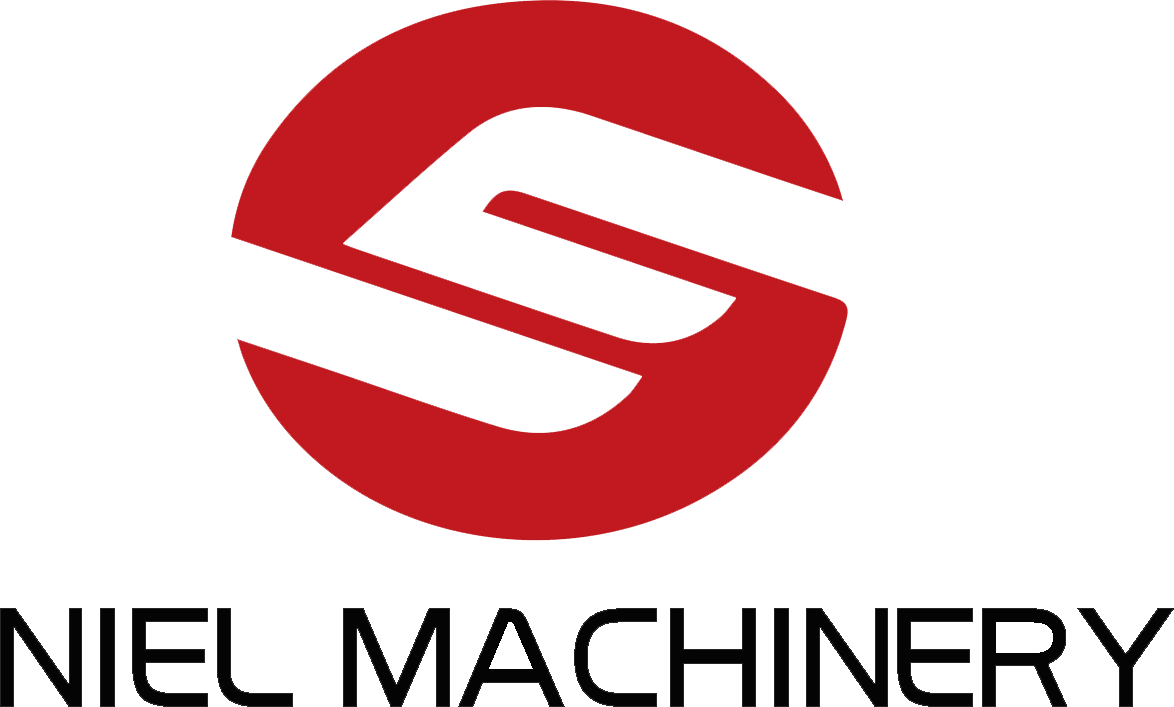Breaking Down the Components of a Successful Dry Powder Mixer
Release time:
2025-04-26 09:00
Source:
Breaking Down the Components of a Successful Dry Powder Mixer
Understanding the Importance of Dry Powder Mixers
In the manufacturing landscape, **dry powder mixers** play a pivotal role in ensuring the consistency and quality of powdered materials. These machines are designed to blend dry bulk materials, facilitating the creation of homogeneous mixtures crucial for various industries, including pharmaceuticals, food, cosmetics, and chemicals. The precision and efficiency of a dry powder mixer can significantly impact the final product's quality, influencing production timelines and operational expenses.
The Anatomy of a Dry Powder Mixer
To grasp the effectiveness of a dry powder mixer, it is essential to understand its core components. Each element contributes to the overall functionality and efficacy of the mixing process.
1. Mixing Chamber
The **mixing chamber** is the heart of any dry powder mixer. This enclosed space is where the actual blending occurs. Its design and material significantly impact the mixing efficiency. Common materials used for the construction of mixing chambers include stainless steel and carbon steel, chosen for their durability and resistance to corrosion. The shape of the chamber, whether cylindrical or conical, also plays a crucial role in determining how evenly the materials are blended.
2. Agitators and Mixing Mechanisms
Agitators are critical components that facilitate the mixing action within the chamber. Various types of agitators can be employed, including:
- **Ribbon Blenders**: These use a double ribbon design to move materials in a continuous flow, ensuring uniform mixing.
- **Paddle Mixers**: Featuring paddles that rotate at different angles, these mixers facilitate effective mixing of powders, especially those with varying particle sizes.
- **V-Blenders**: Ideal for mixing dry powders with different densities and bulk characteristics, V-blenders ensure complete integration without degradation of the materials.
Choosing the right agitator type is vital for optimizing mixing performance based on the specific characteristics of the powders being blended.
3. Drive System
The **drive system** powers the mixing mechanism. It typically consists of a motor and gearbox that provide the necessary torque and speed for efficient mixing. The selection of the motor's power and the gearbox's ratio affects the mixer's ability to handle various materials. A well-designed drive system ensures that the mixer operates smoothly and reduces the likelihood of breakdowns during operation.
4. Discharge Mechanism
The **discharge mechanism** is integral for efficiently removing the finished product from the mixer. Depending on the design, this can include:
- **Slide Gates**: Used in many mixers, these allow for controlled discharge of materials.
- **Hinged or Pneumatic Doors**: Offering quick access for cleaning and maintenance, these mechanisms promote operational efficiency.
The choice of a discharge mechanism should align with production requirements and the properties of the powdered materials.
5. Control Systems and Automation
Modern dry powder mixers often feature advanced **control systems** that automate the mixing process. These systems can include programmable logic controllers (PLCs), which allow operators to set specific mixing times, speeds, and cycles. Automation enhances precision, minimizes human error, and improves overall productivity.
6. Safety Features
Incorporating **safety features** into dry powder mixers is vital to ensure safe operations. Common safety components include:
- **Emergency Stop Buttons**: These allow for immediate shutdown in case of an emergency.
- **Overload Protection**: Prevents damage to the motor and other components by detecting excessive loads.
Prioritizing safety not only protects personnel but also extends the lifespan of the equipment.
Types of Dry Powder Mixers
Different types of dry powder mixers are available, each tailored to meet specific needs and applications. Understanding these types helps in selecting the right mixer for your manufacturing processes.
1. Batch Mixers
**Batch mixers** are designed for mixing limited quantities of powder at a time. They are ideal for small-scale production and offer flexibility in changing recipes. These mixers ensure precise control over the mixing process, making them suitable for high-quality applications.
2. Continuous Mixers
**Continuous mixers**, on the other hand, are built for large-scale production. They allow for the uninterrupted addition of materials, making them efficient for high-volume operations. These mixers are often used in industries where consistency and speed are crucial.
3. High-Shear Mixers
**High-shear mixers** utilize rapid rotor-stator designs to create strong shear forces that break down particles and ensure thorough mixing. These devices are particularly useful for achieving fine blends and integrating powders with liquids.
How to Choose the Right Dry Powder Mixer
Selecting the appropriate dry powder mixer involves a thorough evaluation of various factors that align with your specific requirements.
1. Material Characteristics
Understanding the properties of the materials you intend to mix is critical. Consider factors such as:
- **Particle Size**: Smaller particles may require different mixing techniques compared to larger ones.
- **Density**: Materials with varying densities may require specialized mixing equipment to achieve uniformity.
- **Moisture Content**: High moisture content can affect the mixing process and may necessitate specialized designs.
2. Production Volume and Frequency
Evaluate your production needs. If your operation requires frequent changes in batches or small volumes, a batch mixer might be more beneficial. Conversely, if you are focused on large-scale continuous production, consider a continuous mixer.
3. Budget Constraints
While it's essential to invest in high-quality equipment, adhering to your budget is equally important. Consider both initial costs and long-term operational expenses when selecting a mixer.
4. Maintenance and Support
Assess the manufacturer's reputation for customer support and maintenance services. Reliable after-sale support can significantly reduce downtime and enhance productivity.
Maintaining Your Dry Powder Mixer
To ensure optimal performance and longevity of your dry powder mixer, regular maintenance is crucial.
1. Cleaning
Regular cleaning prevents cross-contamination and maintains product quality. Establish a cleaning schedule based on production frequency and material characteristics.
2. Inspections
Conduct routine inspections to identify wear and tear on components. Early detection of issues can prevent costly breakdowns.
3. Lubrication
Maintain the drive system and moving parts by keeping them properly lubricated. Regular lubrication minimizes friction and prolongs the life of your mixer.
4. Training Operators
Ensure that all operators are adequately trained in the operational and maintenance procedures of the mixer. Well-trained personnel can enhance efficiency and safety.
Conclusion
In summary, understanding the components and functions of a dry powder mixer is essential for optimizing your manufacturing processes. By evaluating material characteristics, production needs, and maintenance requirements, you can select the right mixer that not only meets your specifications but also enhances product quality and operational efficiency. Investing in a reliable dry powder mixer is pivotal to achieving success in your manufacturing endeavors, ensuring that your products meet industry standards and consumer expectations.
Frequently Asked Questions
1. What materials can be mixed using a dry powder mixer?
Dry powder mixers can handle a wide range of materials, including food powders, pharmaceutical ingredients, and chemical compounds.
2. How do I know which type of mixer is best for my needs?
Determining the right mixer involves analyzing material characteristics, production volume, and specific mixing requirements.
3. What is the average lifespan of a dry powder mixer?
With proper maintenance, a dry powder mixer can last several years, often exceeding ten years of effective operation.
4. Can dry powder mixers be automated?
Yes, many modern mixers come with automation features that enhance precision and efficiency in the mixing process.
5. How often should I perform maintenance on my dry powder mixer?
Maintenance schedules can vary, but regular cleaning and inspections should be conducted based on production frequency to ensure optimal performance.
Related News
Boosting Efficiency: Semi Automatic Powder Filling Machine in Action
Boosting Efficiency: Semi Automatic Powder Filling Machine in Action Table of Contents 1. Introduction to Semi Automatic Powder Filling Machines 2. What is a Semi Automatic Powder Filling Machine? 3. How Does a Semi Automatic Powder Filling Machine Work? 4. Benefits of Semi Automatic Powder Filling Machines 5. Applications of Semi Automatic Powder Filling Machines 6. Maint
Understanding Semi-Automatic Powder Filling Machines: A Comprehensive Overview
Semi-automatic powder filling machines are pivotal in the packaging sector, particularly for businesses handling powdered products such as spices, flour, chemicals, and pharmaceuticals. These machines bridge the gap between manual filling methods and fully automatic systems, offering businesses an optimal solution for efficiency and precision. One of the primary advantages of semi-automatic powder
The Evolution of Mixing Machinery: Horizontal Paddle Mixers at the Forefront
The Evolution of Mixing Machinery: Horizontal Paddle Mixers at the Forefront Table of Contents 1. Introduction to Mixing Machinery 2. A Brief History of Mixing Machinery 3. Technological Advancements in Mixing Machinery 4. Understanding Horizontal Paddle Mixers 5. Applications of Horizontal Paddle Mixers 6. Advantages of Horizontal Paddle Mixers 7. The Future of Mixing Machinery 8
The Essential Guide to Horizontal Paddle Mixers: Applications and Benefits
Horizontal paddle mixers are vital components in various manufacturing and processing operations, particularly within the realm of mixing machinery. Understanding the workings and benefits of these mixers can significantly enhance operational efficiency and product quality. A horizontal paddle mixer typically features a cylindrical mixing chamber equipped with paddles that rotate on a horizontal a
Exploring the Dynamic Capabilities of Industrial Ribbon Mixers Table of Contents Introduction to Industrial Ribbon Mixers Understanding the Mechanics of Ribbon Mixers Advantages of Using Ribbon Mixers in Manufacturing Applications of Ribbon Mixers Across Industries Maintaining Your Ribbon Mixer for Longevity Future Trends in Ribbon Mixer Technology Case Studies: Ribbon Mixers in Act
Understanding Industrial Ribbon Mixers: Essential Tools for Effective Material Blending
Industrial ribbon mixers are vital pieces of equipment used in various manufacturing processes, particularly in the blending of powdered and granular materials. These mixers are characterized by their unique design, featuring a set of helical ribbons that move materials through the mixing chamber, ensuring a thorough and uniform blend. With increasing demands for consistency and quality in product




















